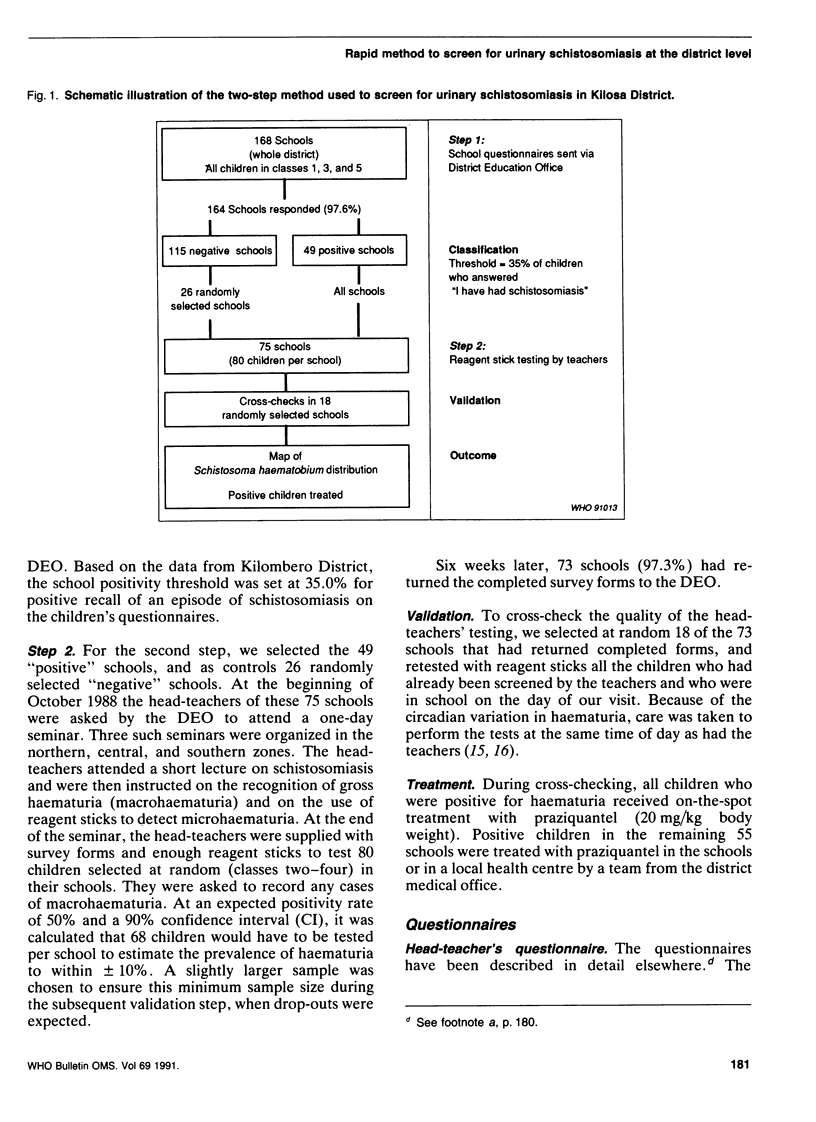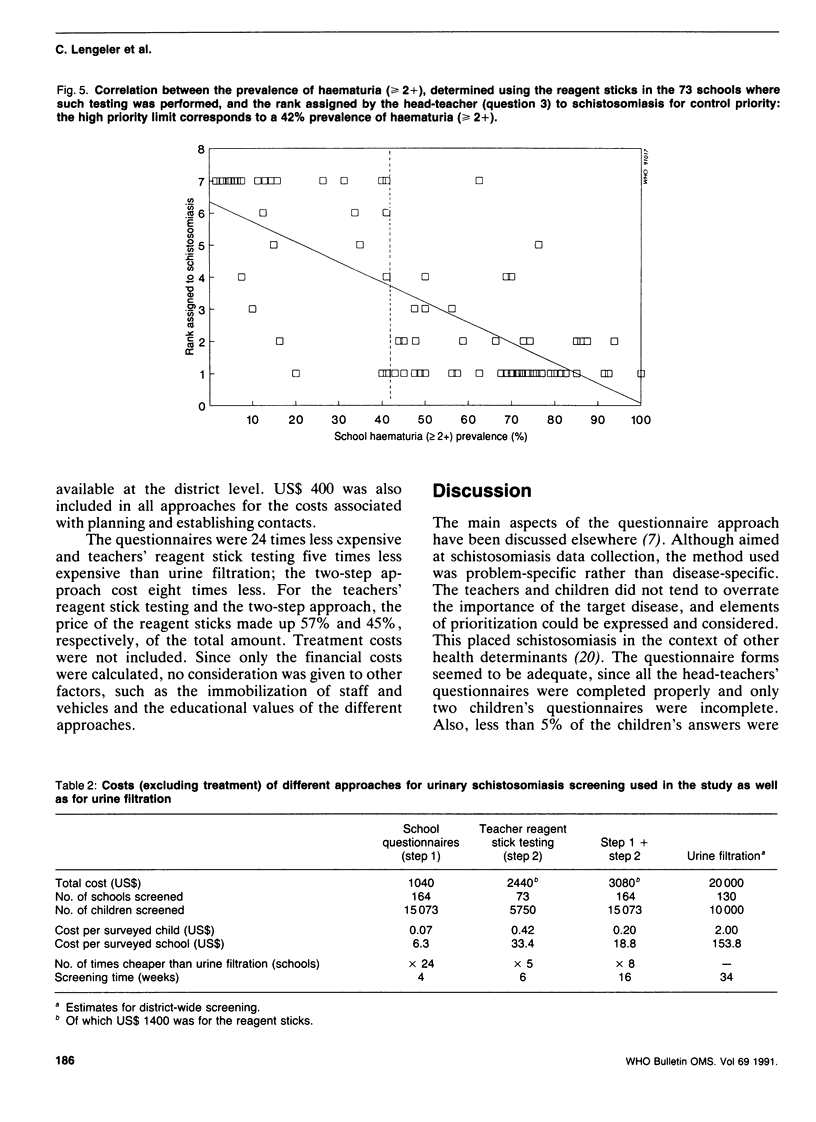Abstract
The operational and diagnostic performance of a two-step method for the cost-effective screening of urinary schistosomiasis was investigated in the Kilosa District of east-central Tanzania. In the first step a simple questionnaire was administered to 15,073 primary schoolchildren by their class teachers over a 4-week period. The answers to the questionnaires had a high negative predictive value for schistosomiasis, and this permitted the safe exclusion of schools where the risk of the disease was low. In the second step, the head-teachers of the 49 high-risk schools and of 26 low-risk schools were instructed on the use of reagent sticks to detect haematuria. Each head-teacher then performed this test on 80 children selected at random in their schools (5750 children were screened within 6 weeks). Crosschecks of the results in 18 schools confirmed the reliability of the head-teachers' testing and their findings were therefore used to prepare an epidemiological map of the district and to arrange for treatment of positive children. This two-step approach relied entirely on the existing school system and permitted screening of a rural district of area 15,000 km2 (population, 350,000) over a 4-month period at a cost of only US$3000.
Full text
PDF










Selected References
These references are in PubMed. This may not be the complete list of references from this article.
- Doehring E., Vester U., Ehrich J. H., Feldmeier H. Circadian variation of ova excretion, proteinuria, hematuria, and leukocyturia in urinary schistosomiasis. Kidney Int. 1985 Apr;27(4):667–671. doi: 10.1038/ki.1985.62. [DOI] [PubMed] [Google Scholar]
- Gryseels B. The relevance of schistosomiasis for public health. Trop Med Parasitol. 1989 Jun;40(2):134–142. [PubMed] [Google Scholar]
- Hatz C., Savioli L., Mayombana C., Dhunputh J., Kisumku U. M., Tanner M. Measurement of schistosomiasis-related morbidity at community level in areas of different endemicity. Bull World Health Organ. 1990;68(6):777–787. [PMC free article] [PubMed] [Google Scholar]
- Mott K. E., Dixon H., Osei-Tutu E., England E. C., Ekue K., Tekle A. Indirect screening for Schistosoma haematobium infection: a comparative study in Ghana and Zambia. Bull World Health Organ. 1985;63(1):135–142. [PMC free article] [PubMed] [Google Scholar]
- Murare H. M., Taylor P. Haematuria and proteinuria during Schistosoma haematobium infection: relationship to intensity of infection and the value of chemical reagent strips for pre- and post-treatment diagnosis. Trans R Soc Trop Med Hyg. 1987;81(3):426–430. doi: 10.1016/0035-9203(87)90158-1. [DOI] [PubMed] [Google Scholar]
- Rohde R. Schistosomiasis control: an estimation of costs. Trop Med Parasitol. 1989 Jun;40(2):240–244. [PubMed] [Google Scholar]
- Savioli L., Mott K. E. Urinary schistosomiasis on Pemba Island: low-cost diagnosis for control in a primary health care setting. Parasitol Today. 1989 Oct;5(10):333–337. doi: 10.1016/0169-4758(89)90129-4. [DOI] [PubMed] [Google Scholar]
- Tanner M., Burnier E., Mayombana C., Betschart B., de Savigny D., Marti H. P., Suter R., Aellen M., Lüdin E., Degrémont A. A. Longitudinal study on the health status of children in a rural Tanzanian community: parasitoses and nutrition following control measures against intestinal parasites. Acta Trop. 1987 Jun;44(2):137–174. [PubMed] [Google Scholar]
- Wilkins H. A., Goll P., Marshall T. F., Moore P. The significance of proteinuria and haematuria in Schistosoma haematobium infection. Trans R Soc Trop Med Hyg. 1979;73(1):74–80. doi: 10.1016/0035-9203(79)90134-2. [DOI] [PubMed] [Google Scholar]
- Zumstein A. A study of some factors influencing the epidemiology of urinary schistosomiasis at Ifakara (Kilombero District, Morogoro Region, Tanzania). Acta Trop. 1983 Sep;40(3):187–204. [PubMed] [Google Scholar]


